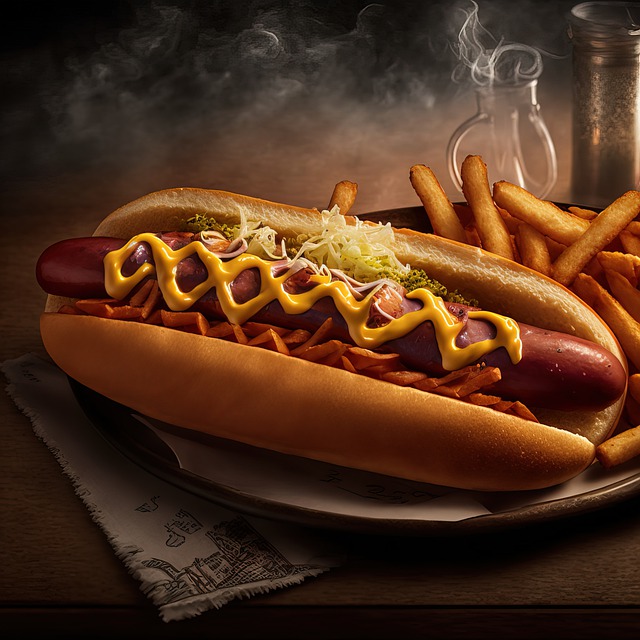Looks like I’m gonna be in the doghouse again—this time by way of the hen house. But why should I care? Here we go.
A few weeks ago, back when eggs were still selling for less than five dollars a dozen, the Pennsylvania Department of Agriculture renewed calls for owners and caretakers of outdoor flocks of domestic poultry (backyard chickens) to keep their birds indoors to protect them from the spread of bird flu—specifically “Highly Pathogenic Avian Influenza” (H.P.A.I.). At least one story edited and broadcast by a Susquehanna valley news outlet gave the impression that “vultures and hawks” are responsible for the spread of avian flu in chickens. To see if recent history supports such a deduction, let’s have a look at the U.S.D.A.’s Animal and Plant Health Inspection Service’s 2022-2023 list of the detection of Highly Pathogenic Avian Influenza in birds affected in counties of the Lower Susquehanna River Watershed in Pennsylvania.
H.P.A.I. 2022 Confirmed Detections as of January 13, 2023
This listing includes date of detection, county of collection, type/species of bird, and number of birds affected. WOAH (World Organization for Animal Health) birds include backyard poultry, game birds raised for eventual release, domestic pet species, etc.
12/30/2022 Adams Black Vulture
12/15/2022 Lancaster Canada Goose
12/15/2022 Lebanon Black Vulture
12/15/2022 Adams Black Vulture (3)
11/8/2022 Cumberland Black Vulture (4)
11/4/2022 Dauphin WOAH Non-Poultry (130)
10/19/2022 Dauphin Captive Wild Rhea (4)
10/17/2022 Adams Commercial Turkey (15,100)
10/11/2022 Adams WOAH Poultry (2,800)
9/30/2022 Lancaster Mallard
9/30/2022 Lancaster Mallard
9/29/2022 Lancaster WOAH Non-Poultry (180)
9/29/2022 York Commercial Turkey (25,900)
8/24/2022 Dauphin Captive Wild Crane
7/15/2022 Lancaster Great Horned Owl
7/15/2022 York Bald Eagle
7/15/2022 Dauphin Bald Eagle
6/16/2022 Dauphin Black Vulture
6/16/2022 Dauphin Black Vulture (4)
5/31/2022 Lancaster Black Vulture (2)
5/31/2022 Lancaster Black Vulture
5/10/2022-Lncstr-Commercial Egg Layer (72,300)
4/29/2022-Lncstr-Commercial Duck (19,300)
4/27/2022-Lncstr-Commercial Broiler (18,100)
4/26/2022-Lncstr-Commercial Egg Layer (307,400)
4/22/2022-Lncstr-Commercial Broiler (50,300)
4/20/2022-Lncstr-Commercial Egg Layer (1,127,700)
4/20/2022-Lncstr-Commercial Egg Layer (879,400)
4/15/2022-Lncstr-Commercial Egg Layer (1,380,500)
In the Lower Susquehanna River Watershed, it’s pretty obvious that the outbreak of avian flu got its foothold inside some of the area’s big commercial poultry houses. Common sense tells us that hawks, vultures, and other birds didn’t migrate north into the Lower Susquehanna River Watershed carrying bird flu, then kick in the doors of the enclosed hen houses to infect the flocks of chickens therein. Anyone paying attention during these past three years knows that isolation and quarantine are practices more easily proposed than sustained. Human footprints are all over the introduction of this infection into these enormous flocks. Simply put, men don’t wipe their feet when no one is watching! The outbreak of bird flu in these large operations was brought under control quickly, but not until teams of state and federal experts arrived to assure proper sanitary and isolation practices were being implemented and used religiously to prevent contaminated equipment, clothing, vehicles, feed deliveries, and feet from transporting virus to unaffected facilities. Large poultry houses aren’t ideal enclosures with absolute capabilities for excluding or containing viruses and other pathogens. Exhaust systems often blow feathers and waste particulates into the air surrounding these sites and present the opportunity for flu to be transported by wind or service vehicles and other conveyances that pass through contaminated ground then move on to other sites—both commercial and non-commercial. Waste material and birds (both dead and alive) removed from commercial poultry buildings can spread contamination during transport and after deposition. The sheer volume of the potentially infected organic material involved in these large poultry operations makes absolute containment of an outbreak nearly impossible.


Looking at the timeline created by the list of U.S.D.A. detections, the opportunity for bird flu to leave the commercial poultry loop probably happened when wild birds gained access to stored or disposed waste and dead animals from an infected commercial poultry operation. For decades now, many poultry operations have dumped dead birds outside their buildings where they are consumed by carrion-eating mammals, crows, vultures, Bald Eagles, and Red-tailed Hawks. For these species, discarded livestock is one of the few remaining food sources in portions of the Lower Susquehanna River Watershed where high-intensity farming has eliminated other forms of sustenance. They will travel many miles and gather in unnatural concentrations to feast on these handouts—creating ideal circumstances for the spread of disease.
The sequence of events indicated by the U.S.D.A. list would lead us to infer that vultures and Bald Eagles were quick to find and consume dead birds infected with H5N1—either wild species such as waterfowl or more likely domestic poultry from commercial operations or from infectious backyard flocks that went undetected. As the report shows, Black Vultures in particular seem to be susceptible to morbidity. Their frequent occurrence as victims highlights the need to dispose of potentially infectious poultry carcasses properly—allowing no access for hungry wildlife including scavengers.
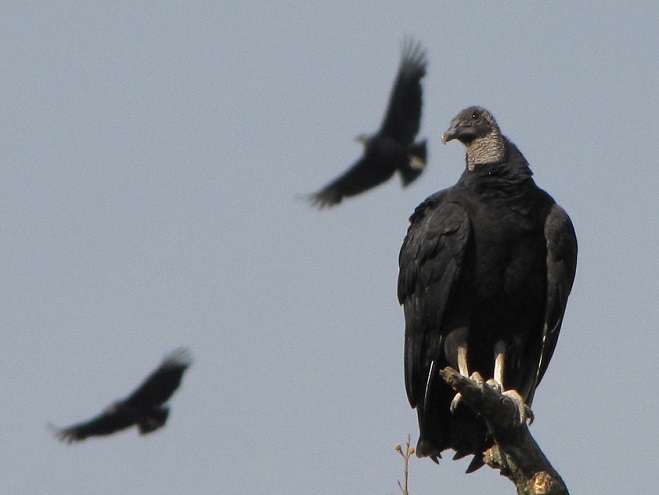
The positive test on a Great Horned Owl is an interesting case. While the owl may have consumed an infected wild bird such as a crow, there is the possibility that it consumed or contacted a mammalian scavenger that was carrying the virus. Aside from rodents and other small mammals, Great Horned Owls also prey upon Striped Skunks with some regularity. Most of the dead poultry from flu-infected commercial flocks was buried onsite in rows of above-ground mounds. Skunks sniff the ground for subterranean fare, digging up invertebrates and other food. Buried chickens at a flu disposal site would constitute a feast for these opportunistic foragers. A skunk would have no trouble at all finding at least a few edible scraps at such a site. Then a Great Horned Owl could easily seize and feed upon such a flu virus-contaminated skunk.

BACKYARD POULTRY
Before we proceed, the reader must understand the seldom-stated and never advertised mission of the Pennsylvania Department of Agriculture—to protect the state’s agriculture industry. That’s it; that’s the bottom line. Regulation and enforcement of matters under the purview of the agency have their roots in this goal. While they may also protect the public health, animal health, and other niceties, the underlying purpose of their existence in its current manifestation is to protect the agriculture industry(s) as a whole.
This is not a trait unique to the Pennsylvania Department of Agriculture. It is at the core of many other federal and state agencies as well. Following the publication of Upton Sinclair’s The Jungle in 1906, a novel decrying “wage slavery” in the meat packing industry, the federal government took action, not for the purpose of improving the working conditions for labor, but to address the unsanitary food-handling practices described in the book by creating an inspection program to restore consumer confidence in the commercially-processed meat supply so that the industry would not crumble.
Locally, few things make the dairy industry and the Pennsylvania Department of Agriculture more nervous than small producers selling “raw milk”. In the days before pasteurization and refrigeration, people were frequently sickened and some even died from drinking bacteria-contaminated “raw milk”. In Pennsylvania, the production and sale of dairy products including “raw milk” is closely regulated and requires a permit. Retention of a permit requires submitting to inspections and passing periodic herd and product testing. Despite the dangers, many consumers continue to buy “raw milk” from farms without permits. These sales are like a ticking time bomb. The bad publicity from an outbreak of food-borne illness traced back to a dairy product—even if it originated in an “outlaw” operation—could decimate sales throughout the industry. Because just one sloppy farm selling “raw milk” could instantly erode consumer confidence and cause an industry-wide collapse of the market resulting in a loss of millions of dollars in sales, it is a deeply concerning issue.
Enter the backyard chicken—a two-fold source of anxiety for the poultry industry and its regulators. Like unregulated meat and dairy products, eggs and meat from backyard poultry flocks are often marketed without being monitored for the pathogens responsible for the transmission of food-borne illness. From the viewpoint of the poultry industry, this situation poses a human health risk that in the event of an outbreak, could erode consumer confidence, not only in homegrown organic and free-range products, but in the commercial line of products as well. Consumers can be very reactive upon hearing news of an outbreak, recalling few details other than “the fowl is foul”— then refraining from buying poultry products. The second and currently most concerning source of trepidation among members of the poultry industry though is the threat of avian flu and other diseases being harbored in and transmitted via flocks of backyard birds.
The Green Revolution, the post-World War II initiative that integrated technology into agriculture to increase yields and assure an adequate food supply for the growing global population, brought changes to the way farmers raised poultry for market. Small-scale poultry husbandry slowly disappeared from many farms. Instead, commercial operations concentrated birds into progressively-larger indoor flocks to provide economy of scale. Over time, genetics and nutrition science have provided the American consumer with a line of readily available high-quality poultry products at an inexpensive price. Within these large-scale operations, poultry health is closely monitored. Though these enclosures may house hundreds of thousands of birds, the strategy during an outbreak of communicable disease is to contain an outbreak to the flock therein, writing it off so to speak to prevent the pathogens from finding their way into the remainder of the population in a geographic area, thus saving the industry at the expense of the contents of a single operation. Adherence to effective biosecurity practices can contain outbreaks in this way.
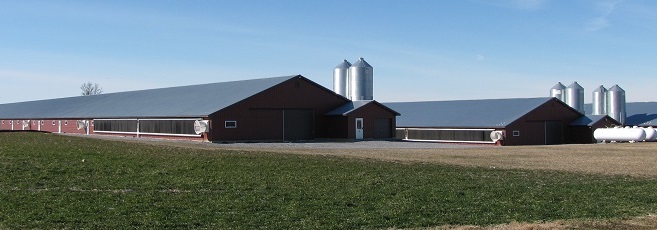
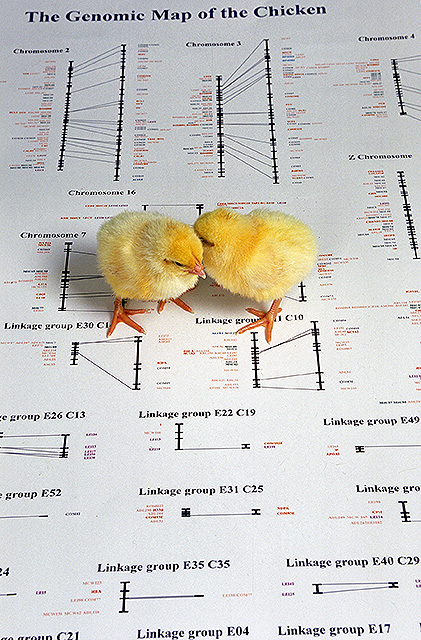

The renewed popularity of backyard poultry is a reversal of the decades-long trend towards reliance on ever-larger indoor operations for the production of birds and eggs. But backyard flocks may make less-than-ideal neighbors for commercial operations, particularly when birds are left to roam outdoors. Visitors to properties with roaming chickens, ducks, geese, and turkeys may pick up contamination on their shoes, clothing, tires, and equipment, then transmit the pathogenic material to flocks at other sites they visit without ever knowing it. Even the letter carrier can carry virus from a mud puddle on an infected farm to a grazing area on a previously unaffected one. Unlike commercial operations, hobby farms frequently buy, sell, and trade livestock and eggs without regard to disease transmission. The rate of infection in these operations is always something of a mystery. No state or county permits are required for keeping small numbers of poultry and outbreaks like avian flu are seldom reported by caretakers of flocks of home-raised birds, though their occurrence among them may be widespread. The potential for pathogens like avian flu virus circulating long-term among flocks of backyard poultry in close proximity to commercial houses is a real threat to the industry.

There are a variety of motivations for tending backyard poultry. While for some it is merely a form of pet keeping, others are more serious about the practice—raising and breeding exotic varieties for show and trade. Increasingly, backyard flocks are being established by people seeking to provide their own source of eggs or meat. For those with larger home operations, supplemental income is derived from selling their surplus poultry products. Many of these backyard enthusiasts are part of a movement founded on the belief that, in comparison to commercially reared birds, their poultry is raised under healthier and more humane conditions by roaming outdoors. Organic operators believe their eggs and meat are safer for consumption—produced without the use of chemicals. For the movement’s most dedicated “true believers”, the big poultry industry is the antagonist and homegrown fowl is the only hope. It’s similar to the perspective members of the “raw milk” movement have toward pasteurized milk. True believers are often willing to risk their health and well-being for the sake of the cause, so questioning the validity of their movement can render a skeptic persona non grata.

For the consumer, the question arises, “Are eggs and poultry from the small-scale operations better?”
While many health-conscious animal-friendly consumers would agree to support the small producer from the local farm ahead of big business, the reality of supplying food for the masses requires the economy of scale. The billions of people in the world can’t be fed using small-scale and/or organic growing methods. The Green Revolution has provided record-high yields by incorporating herbicides, insecticides, plastic, and genetic modification into agriculture. To protect livestock and improve productivity, enormous indoor operations are increasingly common. Current economics tell the story—organic production can’t keep up with demand, that’s why the prices for items labelled organic are so much higher.
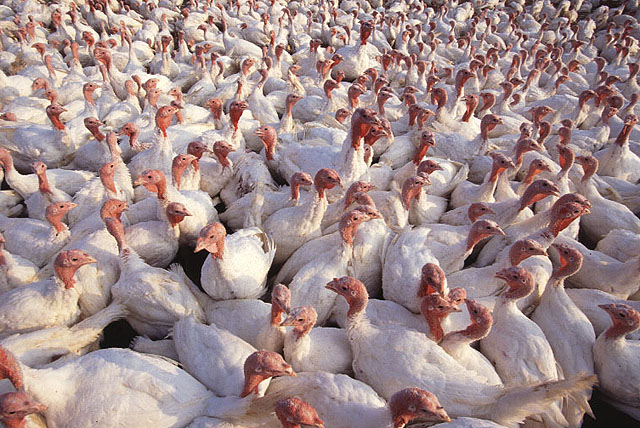
To the consumer, buying poultry raised outdoors is an appealing option. Compared to livestock crowded into buildings, they feel good about choosing products from small operations where birds roam free and happy in the sunshine.
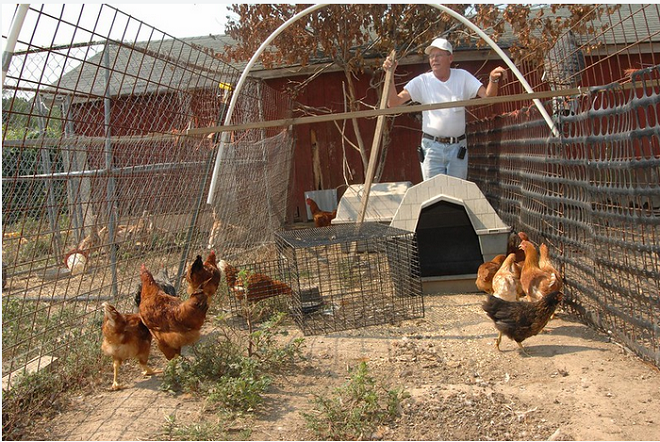
But is the quality really better? Some research indicates not. Salmonella outbreaks have been traced back to poultry meat sourced from small unregulated operations. Studies have found dioxins in eggs produced by hens left to forage outdoors. The common practice of burning trash can generate a quantity of ash sufficient to contaminate soils with dioxins, chemical compounds which persist in the environment and in the fatty tissue of animals for years. The presence of elevated levels of dioxins in eggs from outdoor grazing operations may pose a potential consumer confidence liability for the entire egg industry.
Birds raised or kept in an outdoor zoo or backyard poultry setting can be susceptible to viruses and other pathogens when wild birds including vultures and hawks become attracted to the captives’ food and water when it is placed in an accessible location. In addition, hunting and scavenging birds are opportunistic— attracted to potential food animals when they perceive vulnerability. Selective breeding under domestication has rendered food poultry fat, dumb, and too genetically impaired for survival in the wild. These weaknesses instantly arouse the curiosity of raptors and other predators whose function in the food web is to maintain a healthy population of animals at lower tiers of the food chain by selectively consuming the sickly and weak. In settings such as those created by high-intensity agriculture and urbanization, wild birds may find the potential food sources offered by outdoor zoos and backyard poultry irresistible. As a result they may perch, loaf, and linger around these locations—potentially exposing the captive birds to their droppings and transmission of bird flu and other diseases.


While outdoor poultry operations usually raise far fewer birds than their commercial counterparts, their animals are still kept in densities high enough to promote the rapid spread of microbiological diseases. Clusters of outdoor flocks can become a reservoir of pathogens with the capability of repeatedly circulating disease into populations of wild birds and even into commercial poultry operations—threatening the industry and food supply for millions of people. For this reason, state and federal agencies are encouraging operators to keep backyard poultry indoors—segregated from natural and anthropogenic disease vectors and conveyances that might otherwise visit and interact with the flock.
BACK TO THE FUTURE?—NOT LIKELY
The hobby farmer, the homesteader, the pet keeper, and the consumer seldom realize what the modern farmer is coming to know—domestic livestock must be segregated from the sources of contamination and disease that occur outdoors. Adherence to this simple concept helps assure improved health for the animals and a safer food supply for consumers. In the future, outdoor production of domestic animals, particularly those used as a food supply, is likely to be classified as an outdated and antiquated form of animal husbandry.

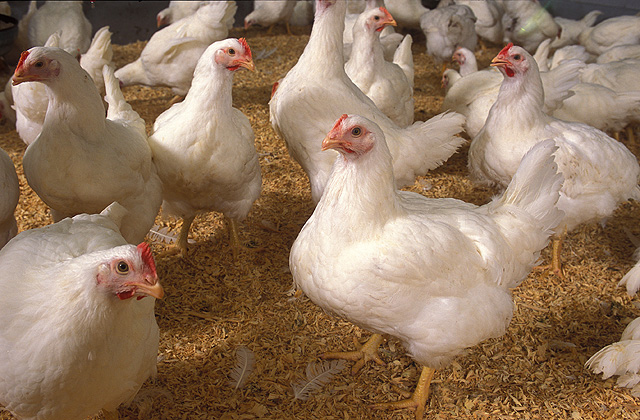


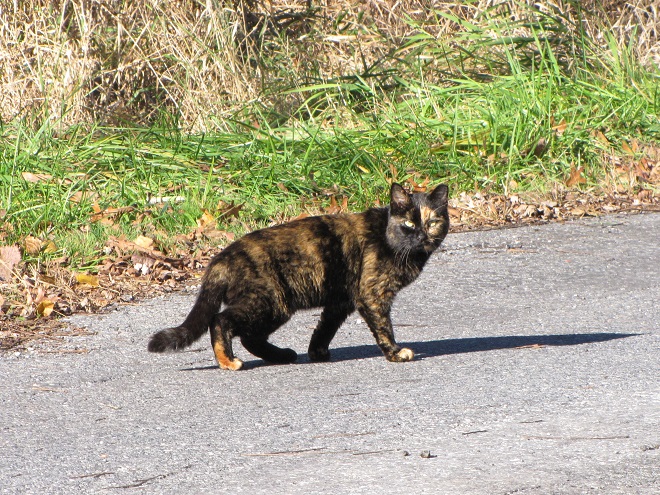
THE THREAT FROM PRIONS
If there are three things the world learned from the SARS CoV-2 (Covid-19) epidemic, it’s that 1) eating or handling bush meat can bring unwanted surprises, 2) dense populations of very mobile humans are ideal mediums for uncontrolled transmission of disease, and 3) quarantine is easier said than done.
If you think viruses are bad, you don’t even want to know about prions. Prions are a prime example of why now is a good time to begin housing domestic animals, including pets, indoors to segregate them from wildlife. And prions are a good example of why we really ought to think twice about relying on wild animals as a source of food. Prions may make us completely rethink the way we interact with animals of any kind—but we had better do our thinking fast because prions turn the brains of their victims into Swiss cheese.

Diseases caused by prions are rapidly progressing neurodegenerative disorders for which there is no cure. Prions are an abnormal isoform of a cellular glycoprotein. They are currently rare, but prions, because they are not living entities, possess the ability to begin accumulating in the environment. They not only remain in detritus left behind by the decaying carcasses of afflicted animals, but can also be shed in manure—entering soils and becoming more and more prevalent over time. Some are speculating that they could wind up being man’s downfall.
The Centers for Disease Control lists these human afflictions caused by prions…
-
-
- Creutzfeldt-Jakob Disease (CJD)
- Variant Creutzfeldt-Jakob Disease (vCJD)
- Gerstmann-Straussler-Scheinker Syndrome
- Fatal Familial Insomnia
- Kuru
-
The Centers for Disease Control lists these prion-caused ailments of other animals…
-
-
- Bovine Spongiform Encephalopathy (BSE)
- Chronic Wasting Disease (CWD)
- Scrapie
- Transmissible Mink Encephalopathy
- Feline Spongiform Encephalopathy
- Ungulate Spongiform Encephalopathy
-

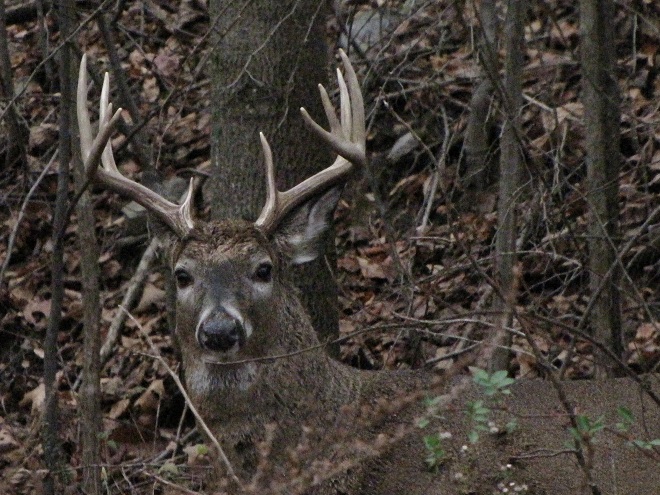

SOURCES
Schoeters, Greet, and Ron Hoogenboom. 2006. Contamination of Free-range Chicken Eggs with Dioxins and Dioxin-like Polychlorinated Biphenyls. Molecular Nutrition and Food Research. (10):908-14.
Szczepan, Mikolajczyk, Marek Pajurek, Malgorzata Warenik-Bany, and Sebastian Maszewski. 2021. Environmental Contamination of Free-range Hen with Dioxin. Journal of Veterinary Research. 65(2):225-229.
U.S.D.A. Animal and Plant Inspection Service. 2022 Confirmations of Highly Pathogenic Avian Influenza. aphis.usda.gov/aphis/ourfocus/animalhealth/animal-disease-information/avian/avian-influenza/hpai-2022/2022-hpai-commercial-backyard-flocks as accessed January 14, 2023.
U.S.D.A. Animal and Plant Inspection Service. 2022 Confirmations of Highly Pathogenic Avian Influenza. aphis.usda.gov/aphis/ourfocus/animalhealth/animal-disease-information/avian/avian-influenza/hpai-2022/2022-hpai-wild-birds as accessed January 14, 2023.

